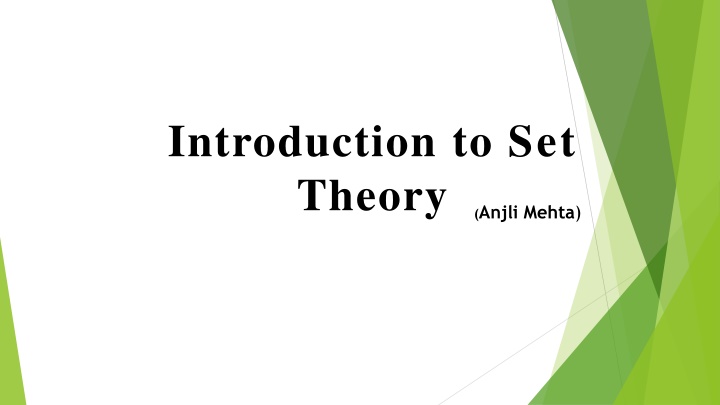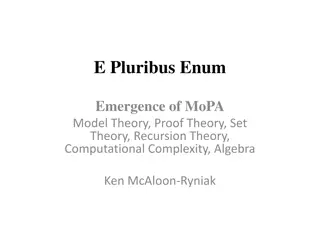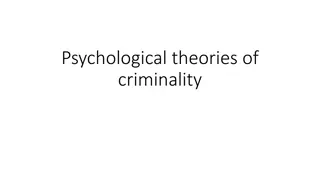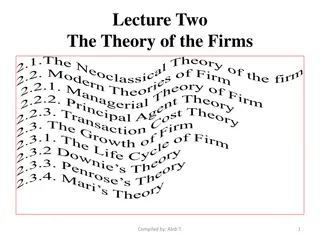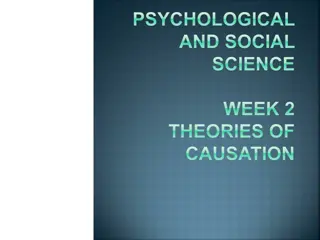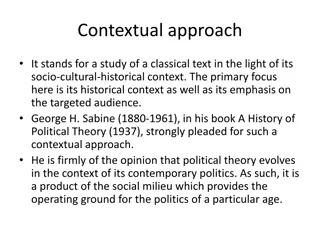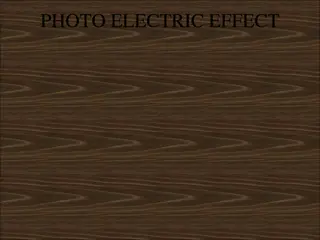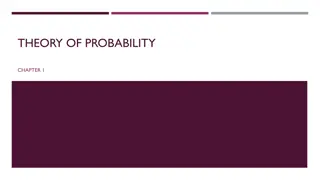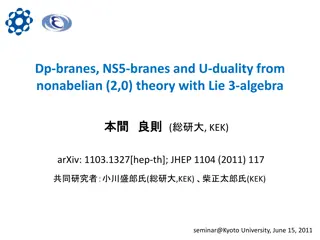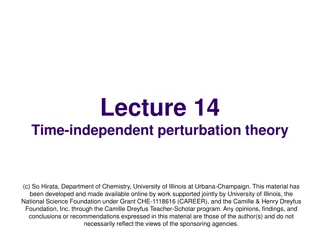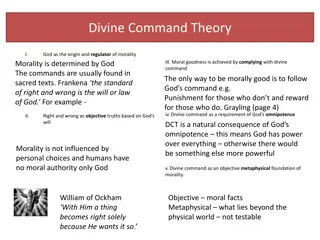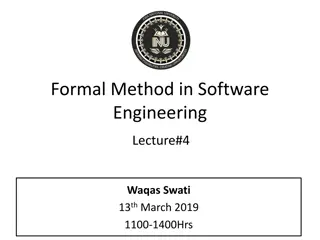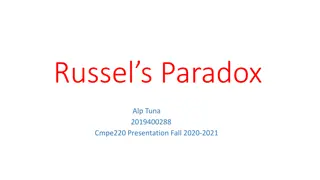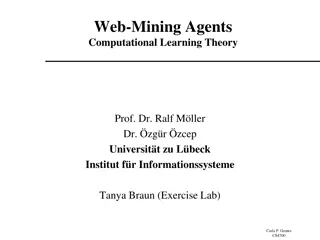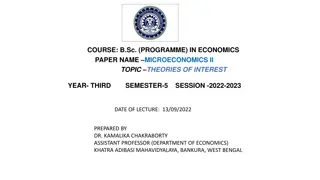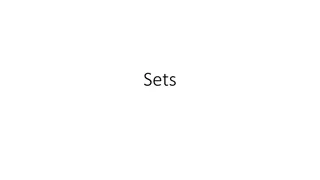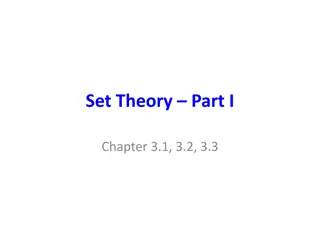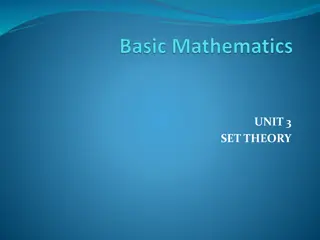Introduction to Set Theory Basics
Set theory involves understanding sets as collections of distinct objects, each denoted within curly braces. Sets can't have duplicate elements, and two sets are considered equal if they contain the same elements regardless of order. The concept revolves around elements within sets and the use of symbols to denote membership and an empty set.
Download Presentation

Please find below an Image/Link to download the presentation.
The content on the website is provided AS IS for your information and personal use only. It may not be sold, licensed, or shared on other websites without obtaining consent from the author.If you encounter any issues during the download, it is possible that the publisher has removed the file from their server.
You are allowed to download the files provided on this website for personal or commercial use, subject to the condition that they are used lawfully. All files are the property of their respective owners.
The content on the website is provided AS IS for your information and personal use only. It may not be sold, licensed, or shared on other websites without obtaining consent from the author.
E N D
Presentation Transcript
Introduction to Set Theory (Anjli Mehta)
A set is an unordered collection of distinct objects, which may be anything, including other sets.
, , , A set is an unordered collection of distinct objects, which may be anything, including other sets.
, , , Set notation: Curly braces with commas separating out the elements A set is an unordered collection of distinct objects, which may be anything, including other sets.
= , , , , These are two different descriptions of exactly the same set. Two sets are equal when they have the same contents, ignoring order.
, , , , = , , , These are also two different descriptions of exactly the same set. (But please use the description without duplication :-) ) Sets cannot contain duplicate elements. Any repeated elements are ignored.
, , , The objects that make up a set are called the elements of that set.
, , , This symbol means is an element of. The objects that make up a set are called the elements of that set.
, , , This symbol means is an element of. The objects that make up a set are called the elements of that set.
, , , This symbol means is an element of. The objects that make up a set are called the elements of that set.
= We denote the empty set using this symbol. The empty set is the set with no elements. Sets can contain any number of elements.
1 1 Question: Are these objects equal?
1 1 1 This is a number. 1 This is a set. It contains a number. Question: Are these objects equal?
1 1 1 This is a number. 1 This is a set. It contains a number. Question: Are these objects equal?
This is the empty set. This is a set with the empty set in it. Question: Are these objects equal?
This is the empty set. This is a set with the empty set in it. Question: Are these objects equal?
x x x This is x itself. x This is a box that has x inside it. No object x is equal to the set containing x.
REPRESENTATION OF SETS There are two ways of expressing a set : Tabular or Roster Form. 1. Set-builder Form or Rule Method. 2. Tabular or Roster Form : In this form, we list all the elements of the set separating them by means of commas and enclosing them in curly brackets { }.For example, (I) If A is the set consisting of the prime numbers between 1 and 10, then the set A can be written in tabular form as A = {2, 3, 5, 7}. ! (ii) If A is the set consisting of all the factors of 50, then the set A can be written in tabular form as A = {1, 2, 5, 10, 25, 50}. ;Sometimes, it is not possible to write all the elements of a set in the roster form, but after knowing the few elements, we can think about the other elements of the given set . For example, the set N of natural numbers may be written as: N'={1,2,3, 4, ...}. Here the dots indicate that the set contains all the natural numbers . Note. 1. The order of writing the elements of a set is immaterial. For example, {1, 3, 5), (3, 1, 5), (5, 3, 1) all denote the same set . 2. An element of a set is not written more than once. Thus the set {2, 5, 2, 3,4, 3, 4, 5} must be written as {2,3, 4,5} :
Write the Following Set in Roaster Form a) A= { x: x is an integer and -3<x<7}.
Write the Following Set in Roaster Form b) B= { x is a multiple of -5 and xI 20}.
Write the Following Set in Roaster Form c) c= {x:4x-3<6,x N}.
